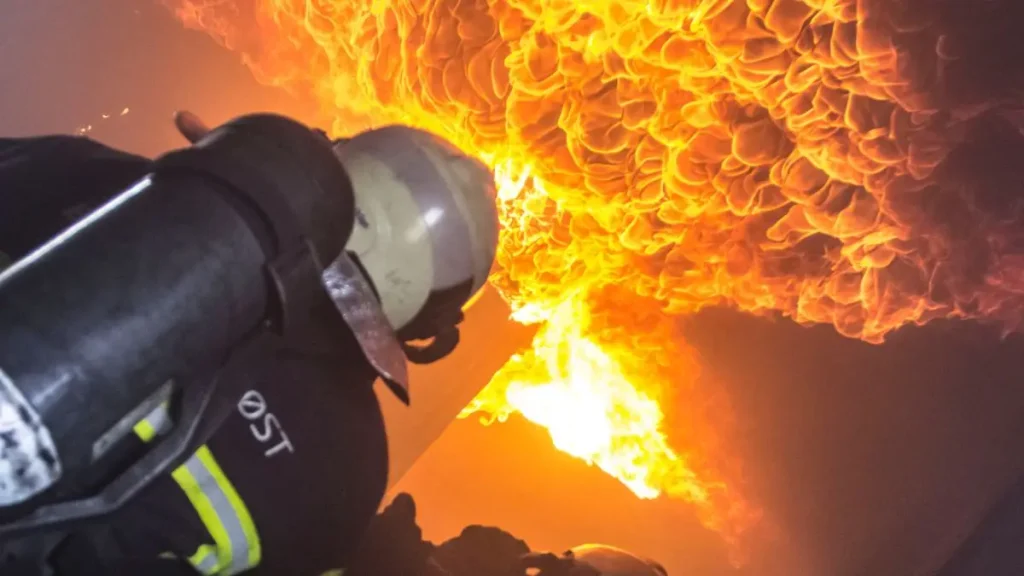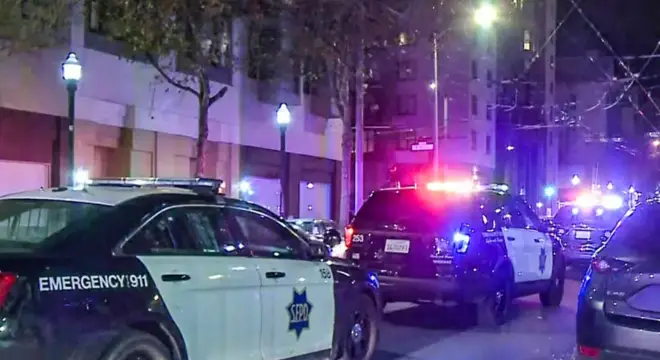Fairfax County House Fire Leaves Two Residents Hurt
I want to start by giving you a clear picture of what actually happened. Late Thursday morning, a home in Vienna caught fire, and by the time firefighters reached the scene, the flames had already taken over large parts of the house. I’ve covered a lot of emergency incidents over the years, but the speed at which this one escalated stands out — partly because of how close the home sits to a wooded stretch off Hunter Mill Road.
Fire crews moved fast. They pushed into the house, fought back heavy fire from multiple sides, and worked to stop it from jumping into the nearby woods. A helicopter was even called in to hit the flames from above — something you don’t see in every residential fire.
Two people were hurt, but thankfully, their injuries weren’t life-threatening. Firefighters didn’t report any injuries among their own.
By early afternoon, crews had the fire under control, though the area stayed blocked off because parts of the scene were still unsafe and investigators had just begun their work.
When you hear about a fire like this, it’s easy to skim the headline and move on. But if you live anywhere in Fairfax County — especially in neighborhoods surrounded by trees — incidents like this feel closer than they look on a map.
If you were nearby or saw the smoke, what was the first thought that hit you?
Timeline: How the Fire Unfolded
When I first looked at the timeline, one thing stood out immediately — how quickly this fire grew. The first call came in around 10 a.m., and by the time crews got to the home, flames were already pushing out with force.
You can tell from the tone of the first update posted by Fairfax County Fire & Rescue on Facebook that crews knew they were dealing with a serious situation. Their message mentioned “heavy fire showing throughout the home” the moment units arrived.
If you’ve ever lived near Hunter Mill Road, you know how quiet that stretch usually is. So imagining that kind of fire activity there — with trucks blocking the road and firefighters pulling lines from every direction — puts things in perspective.
Not long after arrival, a helicopter was brought in to help knock the flames down from above. That usually happens only when there’s a real risk of the fire spreading into wooded areas, and this one came uncomfortably close. The combination of ground crews and aerial support helped stabilize the situation before things got worse.
By a little after 1 p.m., the fire department put out an update saying the fire was finally under control. Even then, they kept the area closed because hotspots and structural risks don’t disappear the moment the flames die down.
Injuries and On-Scene Medical Response
Two people were hurt in the fire, and I want to pause on that for a moment — because even non-life-threatening injuries can be terrifying in a situation like this. According to a report from WUSA9, both individuals were evaluated at the scene, and crews didn’t need to transport them to the hospital.
For me, that detail is telling. When someone is pulled from a burning home or escapes through thick smoke, the difference between “minor” and “serious” often comes down to how fast help arrives. In this case, EMS teams were already on standby, moving in parallel with fire crews, ready to treat smoke exposure, cuts, burns — whatever came up.
It’s also worth noting that no firefighters were injured. It might sound like a small detail, but anyone who’s watched a residential fire up close knows how quickly conditions can turn on the crew inside. The fact that everyone walked away safely says a lot about how the response was managed.
How Fire Crews Stopped the Flames From Spreading?
When I went through the scene details, one theme kept repeating: speed. Firefighters talk a lot about “knocking down” a fire quickly, but in a home surrounded by trees, there’s more at stake than just the structure itself.
The first teams pushed straight into suppression mode — hoses in place, ladders up, attacks coming from multiple angles. At the same time, a separate crew started search-and-rescue operations to make sure no one else was inside. You can imagine how chaotic that moment must’ve felt, with flames showing from the roof while smoke filled the interior.
What really made a difference here was the helicopter support. When you combine dense vegetation, dry conditions, and a home fully involved in fire, the risk of a wider spread goes up fast. Hitting the flames from above bought firefighters crucial minutes to get control from the ground.
In situations like this, you don’t just fight the fire in front of you — you fight the fire it could become. And that’s exactly what the crews did.
This quick, coordinated response reminded me of another incident I covered recently, where firefighters in Georgia moved just as fast to pull one adult and three children out of a burning home.
Road Closures and Local Disruption
If you were anywhere near Hunter Mill Road while this was happening, you probably felt the ripple effect instantly. The entire stretch between Lawyers Road and Hunter Station Road was shut down, and for good reason. Fire trucks, water supply lines, the helicopter landing zone — everything needed space.
I’ve seen people underestimate how long a road stays closed after a house fire. Even once flames die down, hotspots, structural collapse risks, and active investigation zones mean you can’t just reopen the route in a hurry. Anyone trying to drive through that corridor probably had to reroute several miles out.
For nearby residents, the smoke, noise, and movement of emergency vehicles can be jarring. But closures like this are about safety above convenience — and in this case, it kept the area controlled while crews worked.
A lot of local residents told me they rely on quick mobile alerts whenever there’s a major fire or road closure in the county. Channels that share verified, real-time safety updates on WhatsApp have become surprisingly helpful during fast-moving situations like this.
Cause of the Fire and What Investigators Are Looking At
Right now, the exact cause of the fire hasn’t been determined. Investigators will spend time going through what’s left of the structure, looking for burn patterns, electrical points, ignition sources, and anything that can help explain what started it.
One thing that isn’t known yet is whether the home had working smoke alarms. That detail may seem small, but in fire investigations, it can be a turning point in understanding how quickly things escalated — and whether the residents had any early warning.
When you’ve followed as many county fires as I have, you start seeing patterns: electrical faults, heating equipment failures, unattended appliances, or even just a spark that finds the wrong material on the wrong day. We don’t know which category this one falls into yet, but the investigators will eventually piece it together.
And honestly, incidents like this are a reminder that a single malfunction or mistake can put an entire household at risk — especially in areas surrounded by trees where a fire doesn’t stay “just a house fire” for long.
Why the Weather Made This Fire More Dangerous?

When I looked at the conditions on the day of the fire, it immediately made sense why crews were worried about spread. The air was dry, the winds were picking up, and the home sat close enough to the woods for embers to become a real problem.
Fires behave differently when the environment is working against you — they move faster, burn hotter, and jump to new fuel sources with barely any warning.
You don’t always see these risks from the outside. But firefighters do. They know that one gust of wind can take a burning shingle or piece of siding and drop it deep into a dry patch of leaves. And once that happens, a simple house fire can turn into something far bigger.
I’ve covered enough of these incidents to know that most people underestimate weather risk. But conditions like this turn small mistakes into major emergencies. This fire could’ve gone in a much worse direction if crews didn’t react as quickly as they did.
’ve seen similar conditions turn a simple fire into a major loss, like the large Michigan home fire that caused heavy damage even though no one was hurt.
What You Can Learn From This Fire?
Whenever I write about a fire in our area, I don’t want it to just be another news update. If you live in Fairfax County — or anywhere with dense trees, older homes, or unpredictable weather — you should pull a few lessons from what happened here.
Start with the basics: make sure your smoke alarms actually work. Not once a year. Regularly. A lot of people assume they’ll go off when needed, but I’ve seen too many fires where alarms were missing, unplugged, or expired.
You should also think about what you’d do if something like this happened in your home. Do you have a clear way out? Do your kids know where to meet outside? Do you keep hallways uncluttered? These sound like small things, but they save seconds — and seconds matter.
And on days with elevated fire risk, try to avoid anything that can spark. Outdoor equipment, grills, even something as simple as flicking a cigarette into dry grass can set off a chain reaction. It’s not about paranoia; it’s about awareness.
If this fire taught us anything, it’s that prevention is the only part of the story you can actually control.
And if you ever doubt how quickly a fire can turn dangerous, the Ohio incident where a man lost his life trying to save his dogs is a hard reminder.
What Happens Next: Investigation and Recovery
After a fire like this, there’s always a quiet phase that people forget about. The trucks leave, the smoke fades, and suddenly the house is just… there. Burned, unstable, and full of questions. This is when investigators step in. They’ll go room by room, sometimes inch by inch, trying to figure out how and where the fire started.
The homeowners will face a long recovery — dealing with insurance, cleanup, temporary housing, and the emotional shock of losing the place they lived in. Even when everyone survives, a fire takes away more than just objects. It disrupts routines, memories, and the sense of safety you expect inside your own home.
If you live in Fairfax County, I’d honestly say keep an eye on the official updates in the next few days. They’ll eventually release the cause, and those details usually help the rest of us avoid the same risks.
And if you’ve ever been through a fire yourself, you know how disorienting the first 48 hours can feel. Sometimes even a small gesture — checking on a neighbor, offering help, sharing info — makes more difference than you’d expect.
If you want to follow more local safety updates and real on-ground fire incident breakdowns like this, you can explore more stories on our website — it helps you stay aware and prepared.
Disclaimer: The details in this article are based on official statements, publicly available reports, and on-scene updates at the time of writing. Information may change as authorities release new findings. Readers should refer to local officials for the most current and verified updates.


